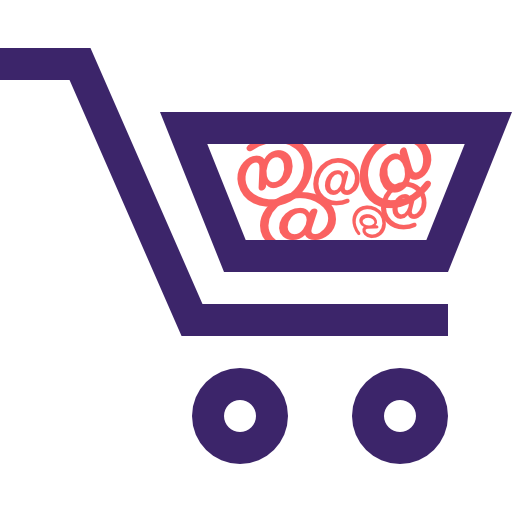5 answers you need before mailing old addresses.
From the archives: Mailing old addresses: 5 questions to ask first
James asked the question on twitter:
If you haven’t mailed an address in 5-10 yrs, would you include it in a re-engagement mail?
A number of people responded that addresses that old should not be mailed. I think the answer is more complex than can be handled in 140 characters.
Five to ten years is a very long time. Think about what you were doing 10 years ago. It’s easy right now, 10 years ago as a nation we were still reeling from the September 11 attacks. On a more personal note, Steve and I were just making the decision to start Word to the Wise. But what about 5 years ago? I can’t remember what we were doing or what our business goals and limitations were.
If you’re going to mail addresses that were collected 5 or 10 years ago, you must give some thought to a number of questions.
1. How has my target market changed in the last 5 – 10 years? How likely is it that customers from then would be interested in my products now?
People grow and change. As we move through different life stages, we have different needs and shop for different products. When thinking about whether or not to send mail to those old addresses, think about customer demographics. Is someone who wanted your product in the past also going to want your product now? What life stages are you targeting?
If you can honestly say that your product has a 10+ year target market, then mailing old customers may be acceptable. But if you focus on a narrow demographic it’s possible that your former customers are no longer interested in anything you have to offer, no matter how compelling the copy.
2. What do I have to offer a customer from 5 – 10 years ago? Is my current product line likely to interest them?
Just as people grow and change, businesses grow and change as well. When we first started Word to the Wise a lot of my consulting was directed at senders who were having blocklist problems and often didn’t have permission to send the mail they were sending. We didn’t have to talk about bulk folders, as most major ISPs hadn’t adopted the bulk folder yet. We didn’t have to talk about Feedback loops or “this is spam” buttons because such things didn’t exist yet. They primarily wanted to know how I could help them get and stay off the RBL or SBL. In contrast, most of my current customers are opt-in senders who want information about how to engage users and get a better responses to their email.
Sure, old customers may be interested in new products and re-establishing contact with an old vendor. Others may have no interest at all. Some small percentage having an interest in your product isn’t sufficient. You need to be sure that a large percentage of recipients are going to want your new product.
3. How long does my product last? Are older customers still interacting with my product? Or have they forgotten I even existed?
There are pieces of software I’m using from 5 or 10 years ago. I’d be fine with a re-engagement email letting me know about other offers they have. But there are also bits of software I downloaded, tried and promptly forgot. I’d be annoyed if the vendor tried to email me. That really nifty pepper mill we bought 6 years ago? Love to hear from them about new stuff. That random kitchen gadget gathering dust in the back of a drawer? Not so much.
So much of making decisions about email is gauging how receptive recipients are to your message. When trying to decide to email very old customers, it’s important to understand your previous customer base.
4. What value am I bringing to the recipient? Do I have something new to offer? Can I push a new product or new launch?
The core of email deliverability is sending mail that your recipients want to receive. If you’re contacting recipients that haven’t heard from you in years, you need to put extra effort into making the email relevant for their lives. One of the ways you can do that is to share your excitement with a new product line, or a re-brand of your company.
Another way to make the email relevant is to make the email informative. Talk to the recipient about how you’ve changed in the intervening years and how your products can help the recipient. Your old customers are more likely to accept your intrusion if you have useful information for them with your old customers
5. Where did I get these email addresses? Do I have a good audit trail for them?
This is where we get to those pesky details. Do you actually know where the addresses came from? Do you have even a partial audit trail. Can you tell what product was bought by the address? Do you know when the address was entered into your database? Do you even know if these are addresses of customers or not?
In my experience, most companies don’t have good audit trails for older addresses. They don’t know where the addresses came from. They don’t know if they’re actual customers. These are the things that cause re-engagement to fail totally.
You should NEVER mail old addresses unless you can identify where the address came from and the specific purchase that address is associated with. If you don’t have that data, then your delivery is going to be awful. You can only aspire to get into the bulk folder. More likely, you’re going to end up with mail blocked at many ISPs.
For the sake of argument, let’s say you do have that data. Someone at your company set up a database that captured everything you may need to mail old customers.
It’s not enough to have the audit data, you should take a deep dive into the data itself. How many of the addresses are at any of the dozens of domains that have retired in the last 10 years? How many are @home.com, @attbi.com, homestead.com or mcimail.com? None of these domains exist any longer. How many are @compuserv.com, @prodigy.net or earthlink.net? These are domains that were popular long ago, but are no longer in wide use. It’s unlikely your customer still has that address.
Still thinking about mailing that list, because it’s mostly @aol.com or @hotmail.com addresses? That may still risk your delivery. Old addresses at major domains are sometimes turned into spamtraps and mailing these addresses may result in blocking. Even running the addresses through one of the ‘list cleaning’ vendors may not protect you from delivery problems related to old addresses.
Statistics show that 30% of email addresses are abandoned by their owners in a year. That means that even 5 years back only about 20% of those addresses are still in use by your customers. The others are abandoned, turned into spamtraps or just won’t deliver. If 80% of your list goes into a black hole, how much does each sale have to be to make it profitable to contact those old customers?
Each question should take an average business quite a bit of time to answer. The first 3 questions are about the intersection between you and your customer. They’re about you, the business, honestly evaluating your product (then and now), your target market (then and now) and the chance that you will meet their needs now as you met them then. The fourth question is about what you want to tell your old customers. But none of those questions are even worth asking unless you know you have a database worth sending to. And even if you do, will the ROI on a mailing be enough to justify the expense to put together an effective re-engagement campaign?
